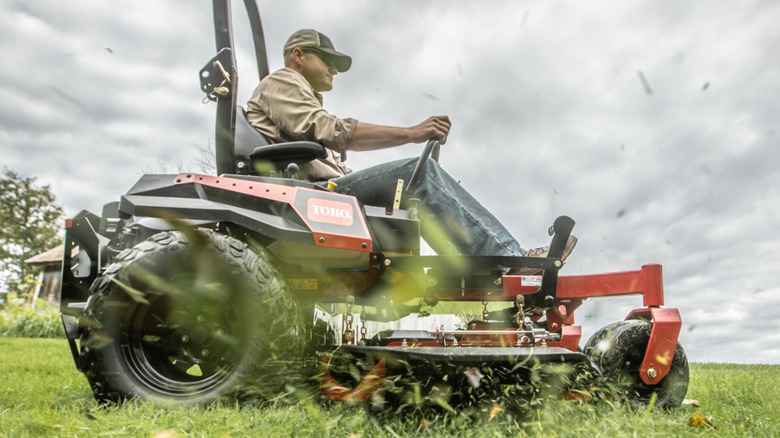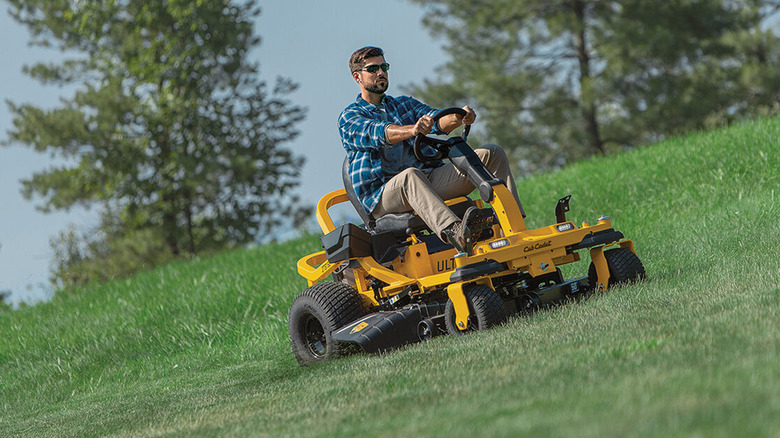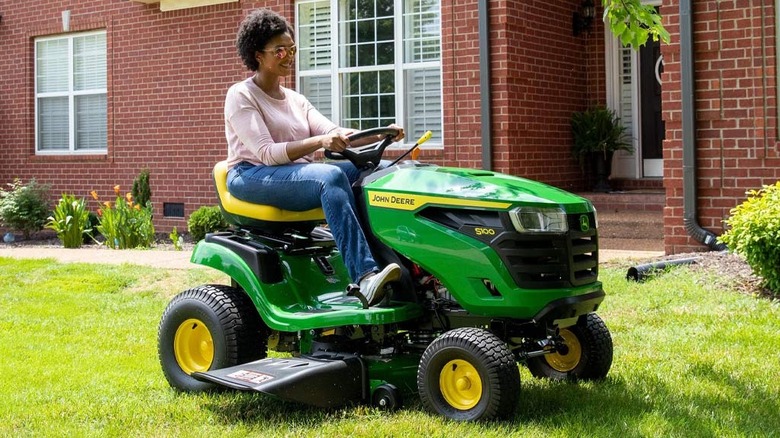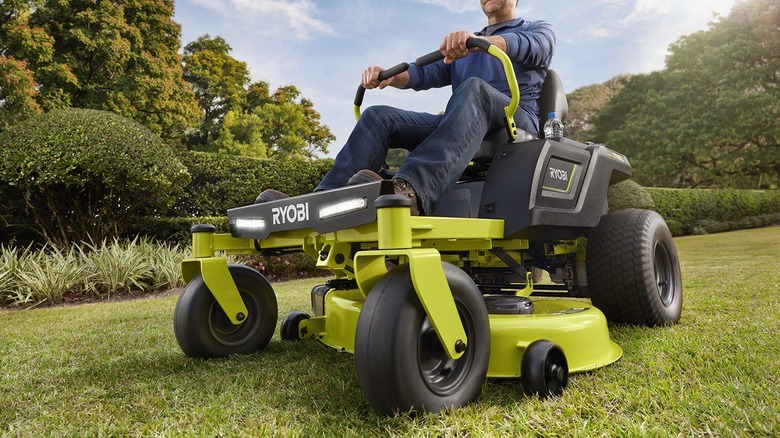What Horsepower Riding Mower Do You Need For Your Yard Size?
Mowing can be a relaxing activity for some, but it's also a frustrating chore for others. After all, pushing a lawn mower in the blazing heat isn't everyone's definition of fun. Sure, a self-propelled mower might be worth buying since it moves on its own. But if what you're really after is the ultimate comfort while exerting the least effort, you might want to consider a riding mower.
Riding mowers come in different shapes and forms and with a multitude features. One of these is the horsepower. Typically, this type of mower is rated from 10 to 40 hp, with the highest figure representing the most powerful engine. It's easy to think that you should go with the biggest horsepower to get the best performance, but there are actually other considerations to account for.
With the increase in horsepower, there's also an increase in price and machine size. You'll want to be sure you're getting the right rating for your yard, so you won't waste money and worry about storage later. But what exactly should you consider when picking a horsepower and does your yard size even matter?
Matching the mower's horsepower to your lawn conditions
Contrary to common belief, a riding mower's horsepower has little to do with yard size and everything to do with your lawn's condition instead. How high the horsepower should be depends on what kind of yard in terms of terrain and grass growth the mower would be dealing with.
For flat spaces, low horsepower mowers like those with 15 hp would do the job just fine. If you have uneven ground with a couple of slopes, look for a more powerful mower with 18 to 24 hp. Steep inclines, on the other hand, require higher horsepower. Make sure you consider exactly how steep the slope is as well. Riding lawn mowers can typically operate on 15- to 20-degree hills, but once it goes over that limit, it would be safer to ditch the riding lawn mower altogether and get yourself a robot mower or a light lawn trimmer.
Besides the yard's topography, grass growth should also be considered when choosing the mower's horsepower. Short grass doesn't require as much effort to cut unlike tall and overgrown grass with weeds. So if you don't mow as often, you'll need more oomph to get through such dense lawn, and an engine with higher horsepower of at least 19 hp can handle that for you.
Horsepower also matters once attachments come into the power. Heavier loads should be paired with higher power. If you frequently use the mower for plowing snow, for instance, you'll want to get a riding mower with bigger horsepower.
Choosing a riding lawn mower based on lawn size
If the size of your lawn is your primary driving factor behind how you pick a riding lawn mower, you'll want to look at the deck size, not its horsepower. The deck size, also known as cutting width, is the actual width the mower can cut in just one pass. For instance, a 30" deck size can mow a 2.5-foot wide strip of grass, and a 54" can cut a larger 4.5-foot space. This means the bigger the deck size, the more area you can cover in one go and the faster you can finish mowing.
When it comes to yardwork, you'll likely want to get it done early, so it's important to select the right deck size for your acreage. Here are the recommended cutting widths for your specific yard sizes:
- 30" for 0.25 acres and smaller
- 30 to 42" for 0.75 to one acre
- 42 to 52" for one to two acres
- 52 to 54" for two to three acres
- 54 to 60" for three to four acres
- 60" and wider for at least four acres
But you might be thinking, if you could finish faster with a large deck, it's best to just buy one even if you have a small yard, right? Well, not exactly. Trees, raised flower beds, and other landscape features can make maneuvering your wide mower a struggle. You'll also have a hard time driving it through narrow pathways and tight corners. Following the recommended sizes is the safe way to go.
Additional lawn size-related considerations
Besides the riding mower's deck size, there are two more things to keep in mind when deciding on the best fit for your acreage. One is the power source. Riding mowers for residential use are either gas- or battery-powered. Some gas mowers can cover about two acres per full tank, while many electric riding mowers can cut from a half-acre to two acres per full charge. If you have a small lawn, either would work. But for bigger yards, consider which is more convenient for you: refilling the tank or recharging the batteries. It's relatively faster to refill gas mowers and go on your merry way again than to wait from four to 12 hours for batteries to recharge, unless of course you buy some spare batteries to reduce the downtime.
Another consideration is the comfort. You'll be spending a while riding, so the bigger your yard, the more you should check the mower for features like seat adjustability, arm and foot rests — maybe even a cup holder. These can make mowing a lot more comfortable. Noise levels are also crucial, especially if you're surrounded by neighbors. You might not want to subject neighbors to a roaring motor for hours while cutting your large yard, so a model that's quieter — perhaps one from Ryobi's electric riding mowers — would be ideal.



